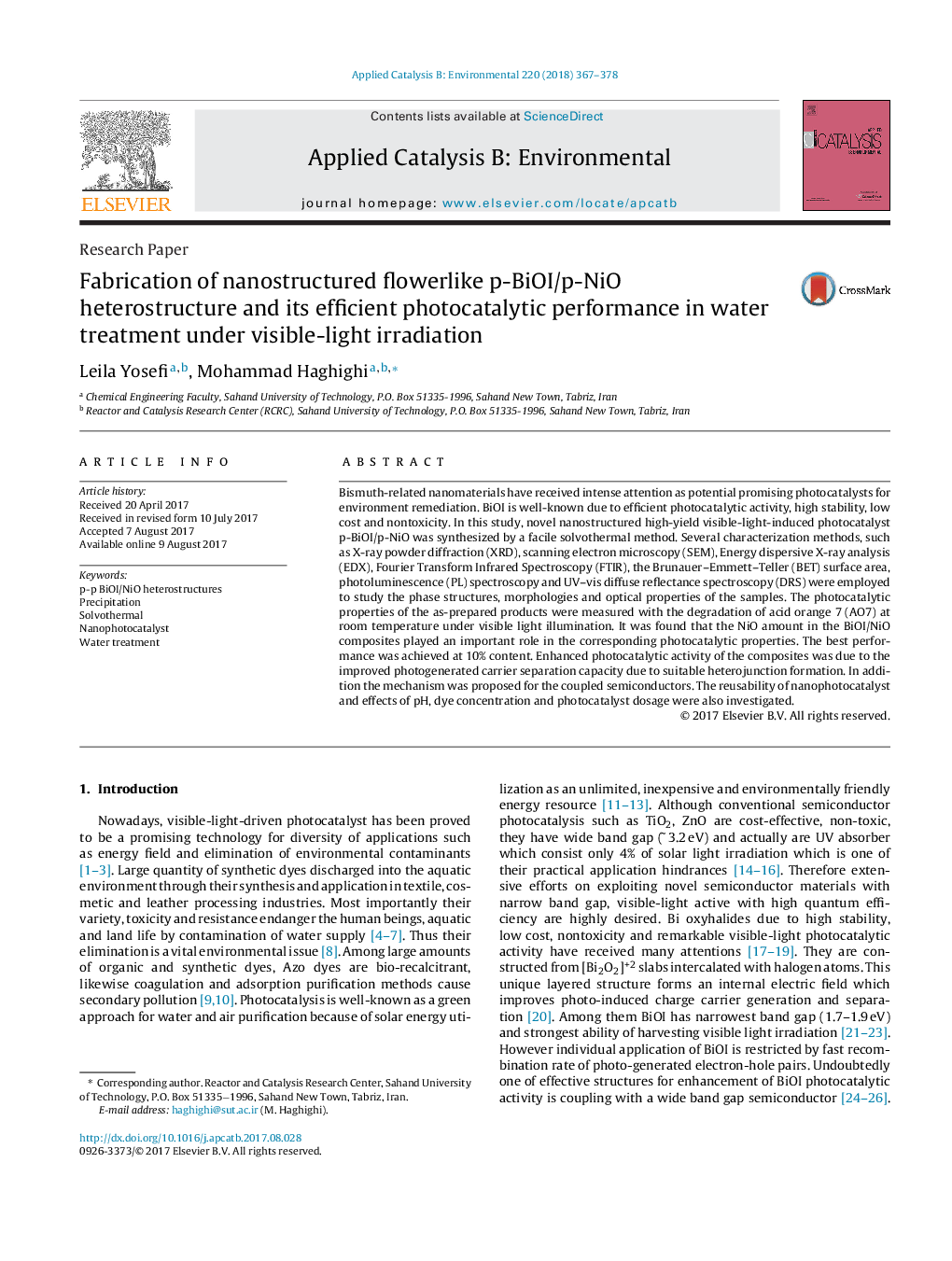| Article ID | Journal | Published Year | Pages | File Type |
|---|---|---|---|---|
| 6453618 | Applied Catalysis B: Environmental | 2018 | 12 Pages |
â¢Successful synthesis of novel p-BiOI/p-NiO by solvothermal-precipitation method.â¢Investigation of structural, physical and electronic properties of composite.â¢Superior photocatalytic activity of BiOI(90%)/NiO(10%) in water treatment.â¢Mechanism for enhanced visible light photoactivity of BiOI(90%)/NiO(10%).
Bismuth-related nanomaterials have received intense attention as potential promising photocatalysts for environment remediation. BiOI is well-known due to efficient photocatalytic activity, high stability, low cost and nontoxicity. In this study, novel nanostructured high-yield visible-light-induced photocatalyst p-BiOI/p-NiO was synthesized by a facile solvothermal method. Several characterization methods, such as X-ray powder diffraction (XRD), scanning electron microscopy (SEM), Energy dispersive X-ray analysis (EDX), Fourier Transform Infrared Spectroscopy (FTIR), the Brunauer-Emmett-Teller (BET) surface area, photoluminescence (PL) spectroscopy and UV-vis diffuse reflectance spectroscopy (DRS) were employed to study the phase structures, morphologies and optical properties of the samples. The photocatalytic properties of the as-prepared products were measured with the degradation of acid orange 7 (AO7) at room temperature under visible light illumination. It was found that the NiO amount in the BiOI/NiO composites played an important role in the corresponding photocatalytic properties. The best performance was achieved at 10% content. Enhanced photocatalytic activity of the composites was due to the improved photogenerated carrier separation capacity due to suitable heterojunction formation. In addition the mechanism was proposed for the coupled semiconductors. The reusability of nanophotocatalyst and effects of pH, dye concentration and photocatalyst dosage were also investigated.
Graphical abstractA series of novel pâp junction photocatalysts (BiOI/NiO) were successfully fabricated via a facile solvothermal-precipitation method. The phase structures, morphologies and optical properties of the as-prepared samples were studied by XRD, FESEM, BET, EDX, PSD and UV-vis DRS. The results revealed that, BiOI/NiO heterostructures displayed greater photocatalytic activity than pure NiO and BiOI for degradation of acid orange 7 (AO7). The superior photocatalytic activity of BiOI/NiO with almost 97.9% AO7 degradation situated at molar percentage ratio of 90% after 3Â h irradiation. The enhanced photocatalytic performance of BiOI/NiO could be mainly attributed to the formation of the heterojunction between p-BiOI and p-NiO with staggered band gap alignment, which efficiently restrains the recombination of photogenerated charge carriers. Moreover, thHighlightse
